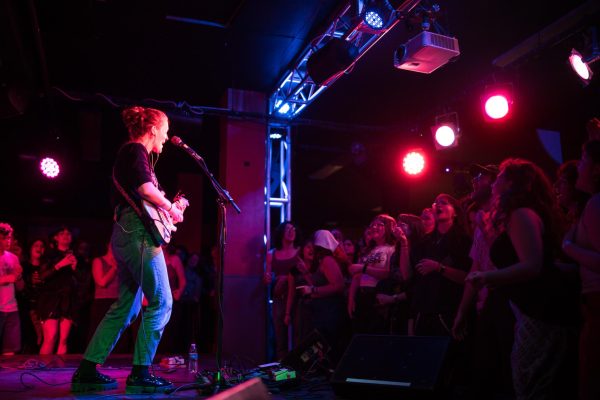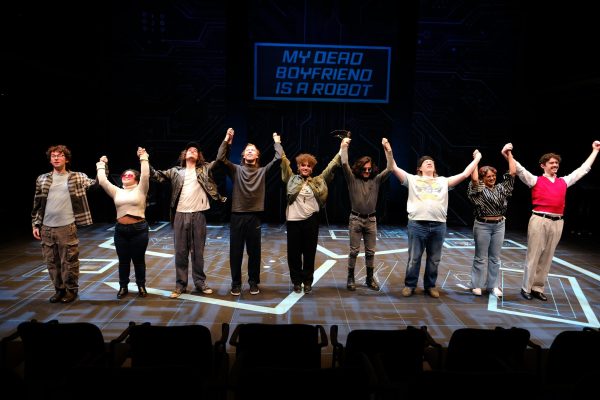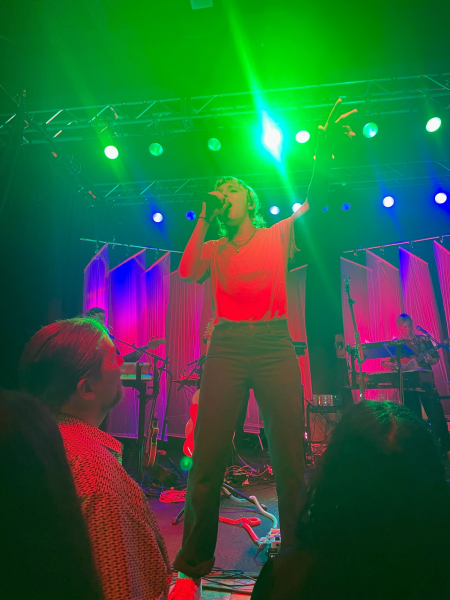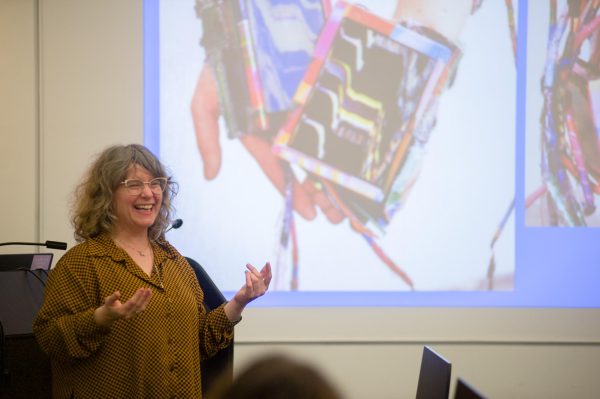Personal Newsletters Prove a Revitalized Way to Connect
College third-year Lucy Kaminsky has an entry in her Notes app that looks like it is miles long, each new section marked with a simple N* and then a number. N*17 marks her current project, yet to hit the inboxes of her over 100 subscribers.
Kaminsky’s kept up an email newsletter since starting college. It was her response to the social and locational upheaval of that moment, and she has used this newsletter since to keep in touch with family and friends, sharing her life across distances great and small. Her high school guidance counselor, a mother she babysits for, and her orthodontist are just a few of the more unexpected contacts on her Listserv.
This note marks not only the evolution of the content shared — bundles of articles and ideas and happenings in her life, in what is mostly a blog-style missive — but also the growing list of recipients. Scrolling through these caches, we even found my name and email listed under N*6.
“Email newsletters, an old-school artifact of the web that was supposed to die along with dial-up connections, are not only still around, but very much on the march,” David Carr reported in his New York Times article, “For Email Newsletters, A Death Greatly Exaggerated” (June 29, 2014). Like most other content on this subject, Carr’s article focused on email newsletters by publications and companies, rather than those started by one individual. However, in many ways the two function just the same.
As concerns rise about the “fakeness” of social media — a quality that, truthfully, never escaped anyone to begin with — information-sharing via those platforms seems growingly incapable of connecting us meaningfully. It needs to be supplemented.
“I think a newsletter is really satisfying and also inherently unsatisfying to me,” Kaminsky said. “I think if this was all I was doing, it would be not enough. But I think that the best part about it is that it has enabled me to … be like, ‘Okay, if I really like writing or sharing writing with people, how can I do it in a different way?’”
Kaminsky also described the joy of curating everything she’s been thinking about and reading, and her hope that this translates for newsletter recipients — as she says, “Why wouldn’t you want to read such a beautifully packaged list?”
“Newsletters are clicking because readers have grown tired of the endless stream of information on the Internet, and having something finite and recognizable show up in your inbox can impose order on all that chaos,” Carr wrote.
It follows that young people are resurrecting the newsletter. The college-try at repurposing an artifact breathes new, distinct life into it. The personal newsletter can be almost like a written YouTube channel — it seeks to share, expand, and connect through the avenues of thought, content consumption, and, for many, deeply-considered writing.
“[My newsletter is] kind of an ongoing answer to the question, ‘What good are the humanities?’” said College fourth-year Phoebe Pan. She started her monthly newsletter, “Soupbone,” almost a year ago. “A lot of the letters take the form of sort of essay-style writing, but it varies from issue to issue. I guess in each issue I’m largely … thinking about how literature exists in the world and my own life, and how that can help us think about humanities in the future as well.”
Pan’s newsletters are marked by exquisite and thoughtful prose, each one meditating on a distinct topic — from love to geographic imagination to the study of video games. Crafting these essays typically takes between seven and eight hours each. Pan is interested in the public humanities, a term that places the humanities outside of purely academic settings and into community engagement and outreach. In many ways, “Soupbone” reflects a fusion of intellectual thought and personal care.
“‘Soupbone’ is a really comfortable visual, I think,” Pan said, commenting on the project’s name. “If you want to take it to a metaphorical level, I guess [I was] thinking about humanities as that bone in the soup that infuses life with a certain flavor and substance … but [also] it sounded cool and I liked it.”
College third-year Goose Macaulay’s “Mother Goose” has a similarly pithy title. Macaulay began their newsletter after being inspired by a family friend’s, which in its heyday boasted thousands of subscribers. Comparatively, “Mother Goose’s” reach is small, with around 30 recipients. Macaulay shares the content they’ve consumed recently, from articles to podcasts, seeing it as a jumping-off point for new types of conversation and connection.
“[It’s] people in my kind of close social circle who I’m not following on social media anymore but who I still want to have a social, online outlet [and] conversation with,” Macaulay said, adding that the connections this has prompted with their family have been particularly exciting, especially lengthy text conversations with their dad. “All of my family is subscribed to it … and they’ll hit me up and be like, ‘Wow, this one article was so cool,’ and then we’ll have a great conversation about it. It’s a fun way to stay in touch that’s not like, ‘How are you?’ ‘I’m stressed, how are you?’ ‘Everything’s fine at home,’ and then it’s done.”
For both Kaminsky and Macaulay, some understandable fatigue and questioning seems to have set in. Kaminsky no longer feels the need to send out a newsletter regularly, and while Macaulay is hopeful about getting back to it, they’re frustrated by having not sent out an update for a couple of months. It’s all easier to do in the summer, and easier still when the idea is fresh, brimming with possibility rather than steeped in routine.
Pan is still relishing the capacity for productive conversation that newsletters provide — as are Macaulay and Kaminsky. She said no two topics have provoked the same consistent responders, but she finds that to be most of the fun.
“Social media is something you go to, but newsletters come to you,” Pan mused. “It comes to your inbox, which has that sense of invitation.”
In Kaminsky’s 15th newsletter, she voiced ongoing concerns about what her content should be, and about the tone she’d set in previous letters. Being honest, she stressed, is not sharing what brands of shampoo she uses. She wanted to get a bit more real with this chosen constituency about what was going on in her life, even if she wasn’t yet sure what that might mean.
Worrying about communicating authentically is a universal experience, it seems. Though we’re closer than ever, dissatisfaction with the depth of our contact only grows in this era of connection-in-seconds.
As a contact on all three of these Listservs, though, I can say from experience that a fresh newsletter in the inbox hits different. While most emails require an immediate response or an agonizing drafting process, a newsletter asks nothing but attention to the carefully collected thoughts of a friend — an attention that’s easy to give. I relish these newsletters, saving them for a quiet moment when I can absorb what’s been written. If there are links, I peruse them and click a few. At a moment when we’re all too used to shouting our ideas and feelings into the void, newsletters say, “For you. Write back.”










